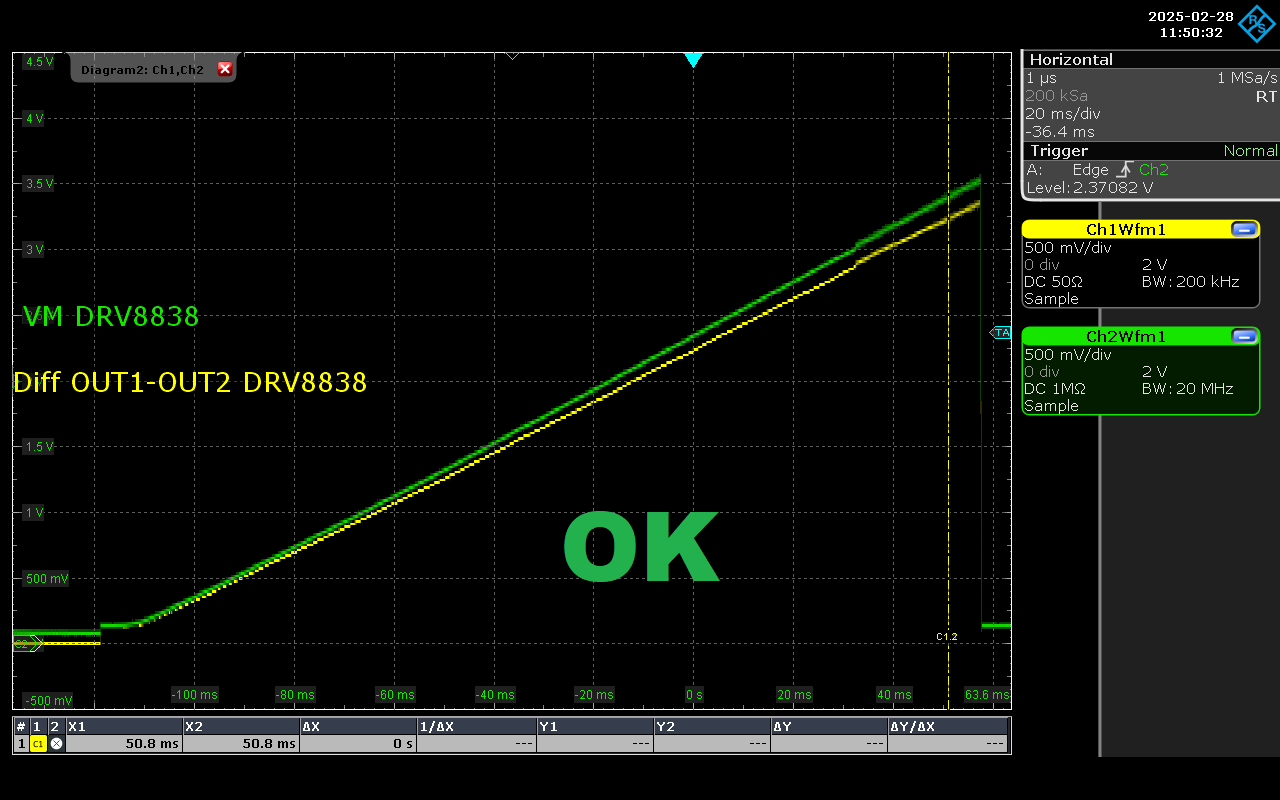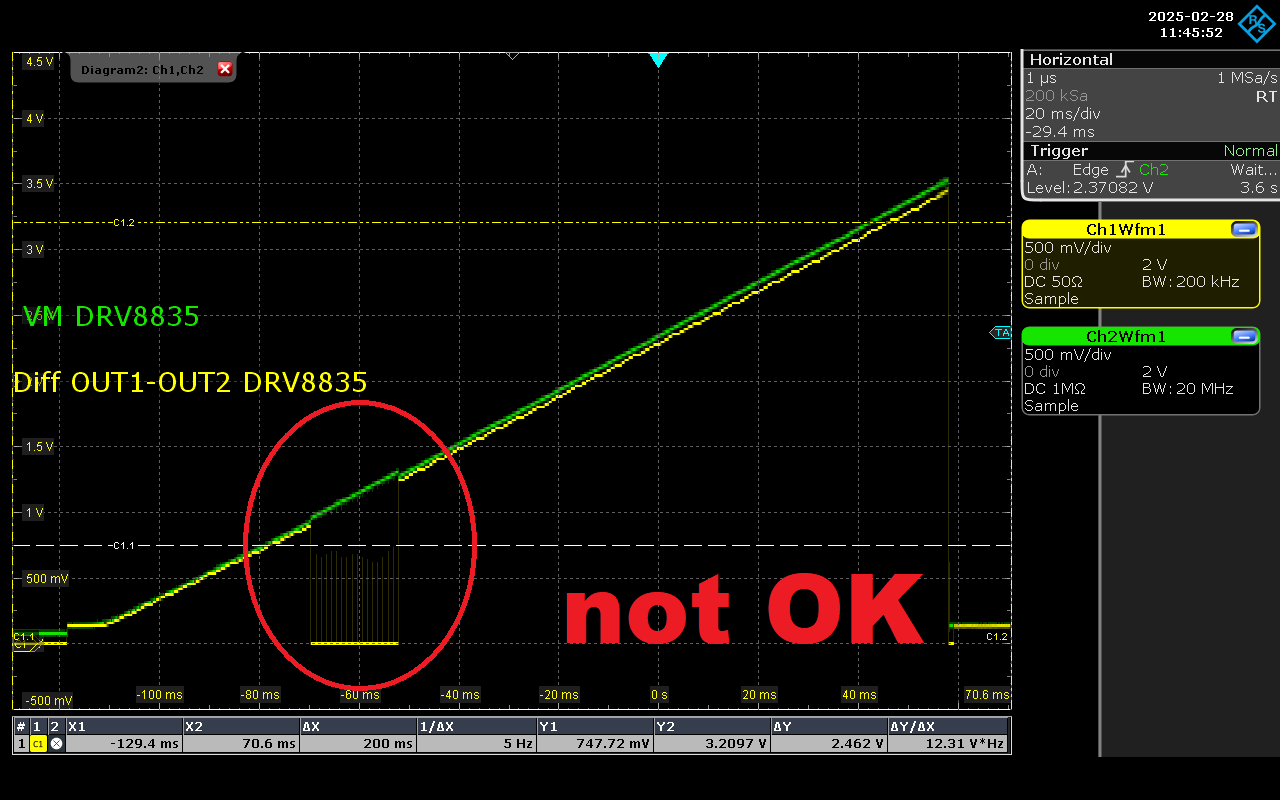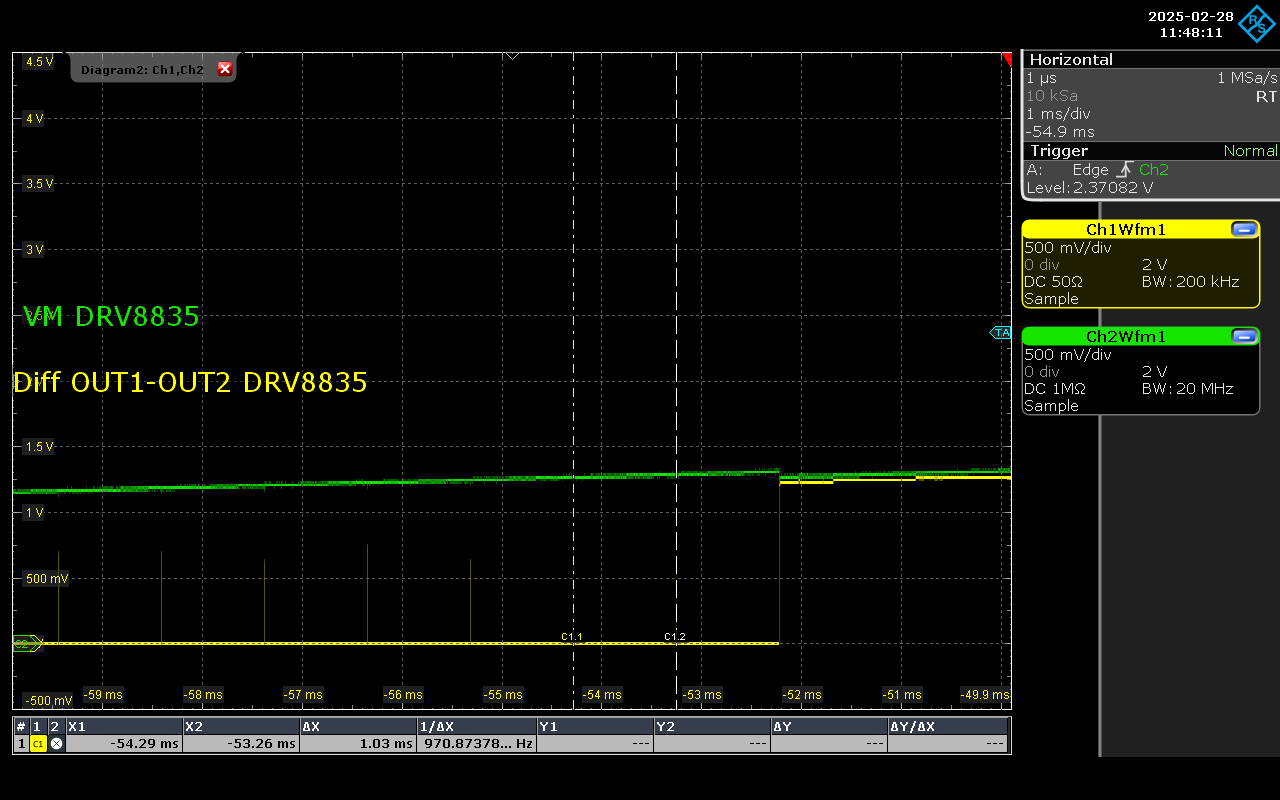Other Parts Discussed in Thread: DRV8838, , DRV8838EVM,
Tool/software:
Hi,
in our application we are driving a resistive load, approx. 8-25 Ohm (screenshots below are 8 Ohm). VM is adjustable between 0 and 8V.
We did tests with DRV8838 and DRV8835. DRV8838 works as expected, DRV8835 does not:



If VM is between 0.9 V and 1.25 V, the output gets disabled. Zooming in shows short pulses every 1ms - acc. to the datasheet this could be "Overcurrent protection retry time"?!
It does not matter whether the load is connected to a single channel or to both channels in parallel. We also tested both VCC=3.3V and VCC=5V, no difference.
Since the datasheets of both devices are spec-wise nearly identical (except that DRV8835 has two channels) - why is there a different behaviour? And what happens between 0.9 V and 1.25 V in DRV8835? Is it safe to use DRV8838 for a VM down to 0V? A non-working OCP is acceptable (current is limited by the resistive load), as well as a slight degradation on rds_on, etc., because the current is low in that working area - as long as the output is not shut down.
Thanks,
Bjoern


